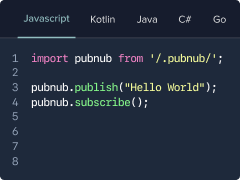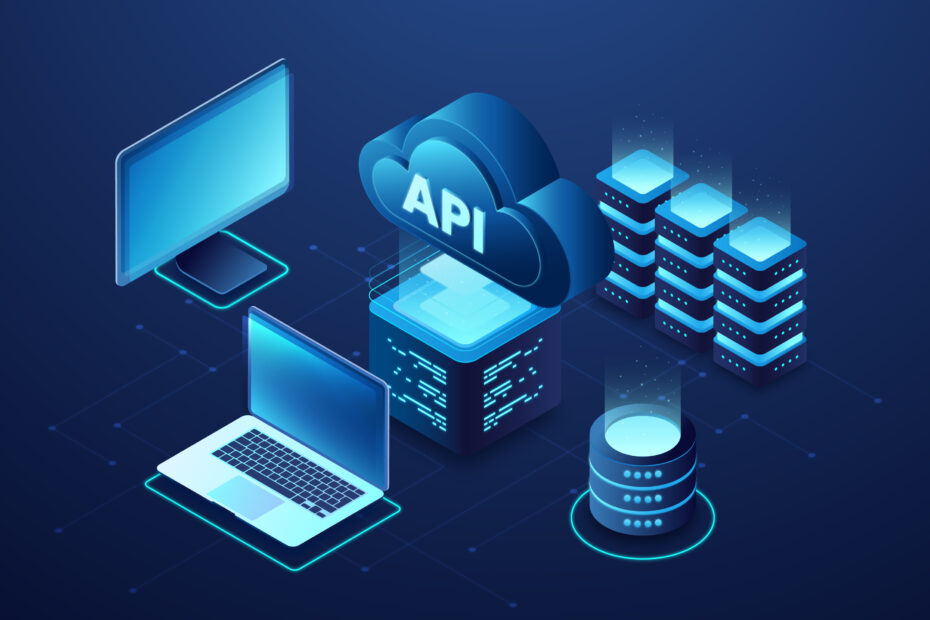As a developer, you’re constantly looking for ways to streamline your workflow, retrieve external data, and enhance the functionality of your applications. Free public APIs are a fantastic resource that can save you countless hours of development time while offering real-world data and services at your fingertips. Whether you’re building a web app, mobile application, or just experimenting with code, there are numerous APIs available that cater to various needs, including data retrieval, authentication, machine learning, and more.
In this article, we’ll explore some of the best free public APIs that you’ll absolutely love as a developer. We’ll go in-depth into their features, possible use cases, and how you can integrate them into your projects.
1. Public API Directories – The Gateway to Endless Possibilities
🔹 Overview
Before we delve into specific APIs, it’s essential to know where to find them. Public API directories like Public-APIs.io and API List are treasure troves of free APIs across countless categories. These platforms aggregate APIs from various domains—ranging from machine learning to finance to entertainment—making it easy for developers to discover and experiment with different data sources.
🔹 Why You’ll Love It
What makes these directories so appealing is their sheer variety and ease of access. They’re meticulously organized, allowing you to filter APIs by category, popularity, and even the type of data they provide. Whether you’re hunting for a niche sports statistics API or a broad financial data service, these directories simplify the discovery process. Plus, many APIs listed are either completely free or offer generous free tiers, making them ideal for prototyping and experimentation without worrying about costs.
🔹 How It Enhances Your Projects
Imagine you’re working on a personal finance app. Instead of manually sourcing financial data, you can quickly find APIs offering stock prices, currency conversion rates, or economic indicators. Similarly, if you’re building a machine learning model, you can tap into APIs that provide training datasets, natural language processing tools, or image recognition capabilities—all readily accessible from these directories.
2. JSONPlaceholder – The Developer's Playground for Fake Data

🔹 Overview
When building and testing applications, especially front-end interfaces, having access to realistic data is crucial. JSONPlaceholder is a brilliant API designed specifically for this purpose. It provides developers with a variety of dummy data, from user profiles to blog posts to comments, which can be used to simulate real-world scenarios in your applications.
🔹 Why You’ll Love It
The beauty of JSONPlaceholder lies in its simplicity and utility. It eliminates the need to create a backend or populate databases with test data when you’re in the early stages of development. You get realistic, structured data that closely mimics what you’d expect from a live API, allowing you to focus on perfecting your UI and functionality. Whether you’re testing how your app handles data fetching, rendering lists, or managing CRUD operations, JSONPlaceholder provides a reliable, hassle-free solution.
🔹 How It Enhances Your Projects
Suppose you’re designing a blog application. Instead of manually entering posts into a database, you can use JSONPlaceholder to retrieve mock blog posts and comments. This allows you to see exactly how your app will look and function with real data, without the overhead of setting up a backend. It’s especially useful for quick prototyping, hackathons, or when you’re teaching API consumption to beginners.
3. OpenWeather – Comprehensive Weather Data at Your Fingertips

🔹 Overview
Weather data is a staple for countless applications, from travel and event planning apps to smart home devices. OpenWeather is one of the most popular and comprehensive APIs in this domain, offering everything from current weather conditions to long-term forecasts and historical data. Its global reach ensures that you can access weather information for almost any location worldwide.
🔹 Why You’ll Love It
OpenWeather stands out due to its robust dataset and flexible API options. It provides not just basic weather information like temperature and humidity but also more granular data such as UV index, air pollution levels, and even marine conditions. Whether you’re building a simple weather widget or a complex climate analytics tool, OpenWeather’s versatility makes it a perfect choice. Plus, its free tier is generous enough to cover most development and testing needs.
🔹 How It Enhances Your Projects
Imagine integrating real-time weather data into a travel app, helping users plan their trips based on forecasts. Or consider a smart irrigation system that adjusts watering schedules based on rainfall predictions. OpenWeather’s rich data can also be used for educational purposes, such as visualizing climate change trends or teaching students about meteorology.
4. PokeAPI – Bringing Pokémon Data to Life

🔹 Overview
For those looking to add a fun twist to their projects or simply indulge in nostalgia, PokeAPI offers a comprehensive database of Pokémon-related data. This API is a favorite among developers looking to build games, fan sites, or even educational tools centered around the beloved Pokémon franchise.
🔹 Why You’ll Love It
PokeAPI is more than just a novelty—it’s a well-structured, fully RESTful API that provides a deep dataset covering Pokémon species, abilities, moves, types, and more. The data is meticulously organized, making it a fantastic tool not only for entertainment but also for learning how to work with APIs. Because it mirrors real-world API structures, it’s an excellent resource for practicing API consumption, data parsing, and application development in a playful and engaging way.
🔹 How It Enhances Your Projects
Whether you’re creating a Pokémon-themed quiz app, a battle simulator, or a visual Pokédex, PokeAPI offers all the data you need. It can also serve as a fantastic teaching tool in coding bootcamps or workshops, where students can build fun, interactive projects while learning the fundamentals of API integration.
5. NASA API – Explore the Cosmos from Your Code
🔹 Overview
For developers fascinated by space, science, and exploration, the NASA API is a dream come true. This API provides access to a treasure trove of data, including satellite imagery, Mars rover photos, asteroid information, and much more. It’s perfect for educational projects, scientific research, or simply feeding your curiosity about the universe.
🔹 Why You’ll Love It
What sets NASA’s API apart is the breadth and depth of its data. You can pull in high-resolution images of distant galaxies, track near-Earth objects, or explore datasets from past missions. The API is well-documented, making it easy to navigate even if you’re new to working with scientific data. Plus, the fact that it’s provided by NASA lends an undeniable cool factor to any project you build with it.
🔹 How It Enhances Your Projects
Consider building an app that tracks the International Space Station’s location in real time or a website that displays the Astronomy Picture of the Day. You could even create educational tools that visualize planetary data or simulate asteroid trajectories. The possibilities are as vast as space itself.
Best Practices for Using Public APIs
While public APIs are powerful tools, using them effectively requires attention to best practices. Here are some key considerations to keep in mind:
🔹 Read the Documentation Thoroughly
Every API comes with its own set of rules, endpoints, and data formats. Before integrating an API into your project, take the time to thoroughly read its documentation. This will help you understand how to authenticate requests, structure queries, and handle responses correctly.
🔹 Respect Rate Limits
Most free APIs impose rate limits to prevent abuse and ensure fair usage. Be mindful of these limits and design your application to handle them gracefully. This might involve caching data locally, implementing retries with exponential backoff, or notifying users when limits are reached.
🔹 Handle Errors Gracefully
APIs can fail for a variety of reasons—network issues, server errors, or invalid requests. Make sure your application can handle these failures gracefully, providing meaningful feedback to users and ensuring the app continues to function as smoothly as possible.
🔹 Secure Your API Keys
If an API requires an API key for authentication, never expose this key in your client-side code. Instead, store it securely on the server side and use environment variables or secret management tools to keep it safe.
Creative Ways to Integrate APIs into Your Projects
APIs aren’t just for practical applications—they can also spark creativity and innovation. Here are some fun and inventive ways to integrate APIs into your projects:
🔹 Build a Dashboard
Combine multiple APIs to create a personalized dashboard that displays weather data, news headlines, stock prices, and more. This is a great way to practice working with different data formats and APIs simultaneously.
🔹 Create a Data-Driven Game
Use APIs like PokeAPI or the NASA API to build interactive, data-driven games. For example, you could create a trivia game that pulls questions from a public knowledge API or a space exploration game using real planetary data.
🔹 Develop Educational Tools
APIs like OpenWeather, NASA, and others offer rich datasets that can be used to create educational applications. These tools can help visualize complex concepts, such as climate change trends, astronomical phenomena, or historical events.
🔹 Automate Tasks with API Integrations
Use APIs to automate repetitive tasks, such as sending reminders, fetching daily reports, or aggregating data from multiple sources. This can be particularly useful in business applications or personal productivity tools.
Common Pitfalls to Avoid When Using APIs
While APIs can greatly enhance your projects, there are some common pitfalls to watch out for:
🔹 Over-Reliance on External Services
While APIs can simplify development, relying too heavily on them can create issues if the service becomes unavailable or changes its terms. Always have a fallback plan, such as caching data locally or providing alternative features.
🔹 Ignoring API Versioning
APIs evolve over time, and changes can break your application if you’re not prepared. Always pay attention to versioning in the API documentation and update your code accordingly.
🔹 Neglecting Data Privacy and Security
When handling sensitive data from APIs, ensure that you’re following best practices for data privacy and security. This includes encrypting data in transit, securing API keys, and complying with relevant regulations.
Final Thoughts
Free public APIs are powerful tools that can enrich your applications, streamline development, and inspire creativity. Whether you’re building a weather app, a data visualization tool, or just experimenting with new ideas, there’s an API out there that can help you achieve your goals. By following best practices, staying mindful of potential pitfalls, and embracing the creative possibilities, you can harness the full potential of these APIs to build innovative, dynamic, and engaging applications.
So go ahead—dive into the world of public APIs, explore new data sources, and see where your creativity takes you!
